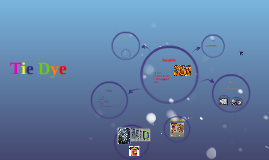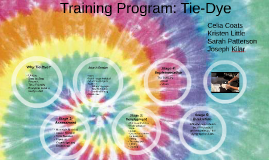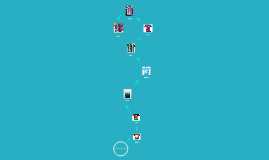Tie~dye
Transcript: The only roadblock for me was that I couldn't find the soda ash, to keep the colors bright. But I did get to use the salt, so the shirt could soak up more of the dye. Image by Tom Mooring "28 Tie Dye Craft Projects and How to Tie Dye." Favecrafts.com. N.p., n.d. Web. 15 May 2014.This website gave me a list of 18 different tie-dye patterns and steps for each on , so I knew how to make them. "Best Fabric Dye for Cotton? Polyester? - Straight Dope Message Board." Straight Dope Message Board RSS. N.p., n.d. Web. 15 May 2014.This site gave me several opinions on which dye would be best to use for my cotton t-shirts. "How to Get Tie-Dye Colors to Stay Bright." Everyday Life. N.p., n.d. Web. 15 May 2014.On this resource if found information on how to keep the colors of my t-shirts bright after washing them. "Tie-Dye Supplies." About.com Family Crafts. N.p., n.d. Web. 20 May 2014.This website gave me information on what materials to use, how I could make the colors on my shirts brighter, and the steps to dye. Roadblocks What I wanted to know > How to keep the colors from fading? > What dye has the highest ratings? > What are some different designs and how do you make them? What I Know > How to tie-dye > What kind of t-shirts met the requirements > Dye was needed A Seconds Chance Process Research Funds and Materials Hands on It showed me that humans make mistakes. It was okay when you messed up on a shirt or tied it wrong because the point of the project was to be creative. My cousin and I came up with our won design and were still happy with the products. Tie~dye First I I tied my shirts based on the design I wanted them to have. Next I hosed down the shirts and hung the t-shirts outside to dry. Once dry I washed the shirts on cold/cold and let them air dry again. The materials included: cotton, t-shirts, Rubber bands, dye , gloves, large pot/bucket, spray bottle, squirt bottles (for dye), Something to stir with, SODA ASH, salt, towel, hangers, and a water hose. The only materials I needed to purchase were dye and bottles, rubber bands, and gloves. I spent a total of $23.50. If I could do this project again I would look harder for the soda ash and try more designs. Afterthoughts Impact Bibliography

















